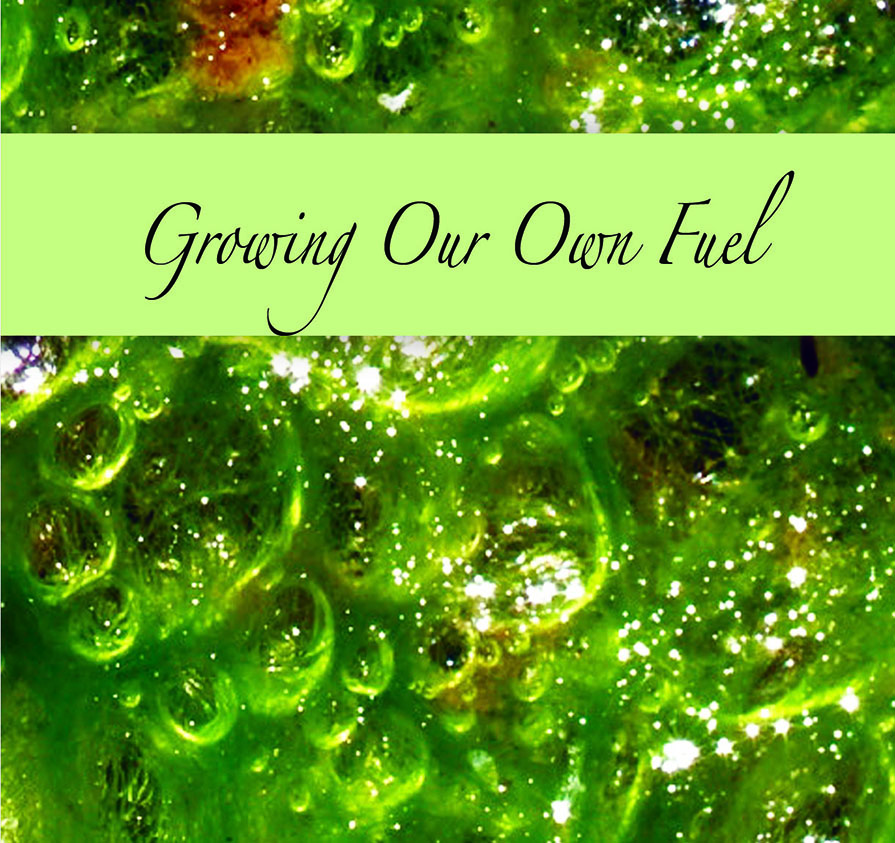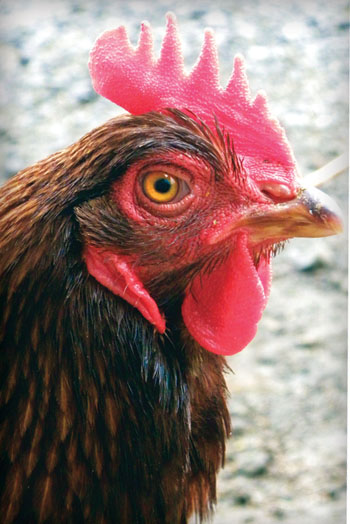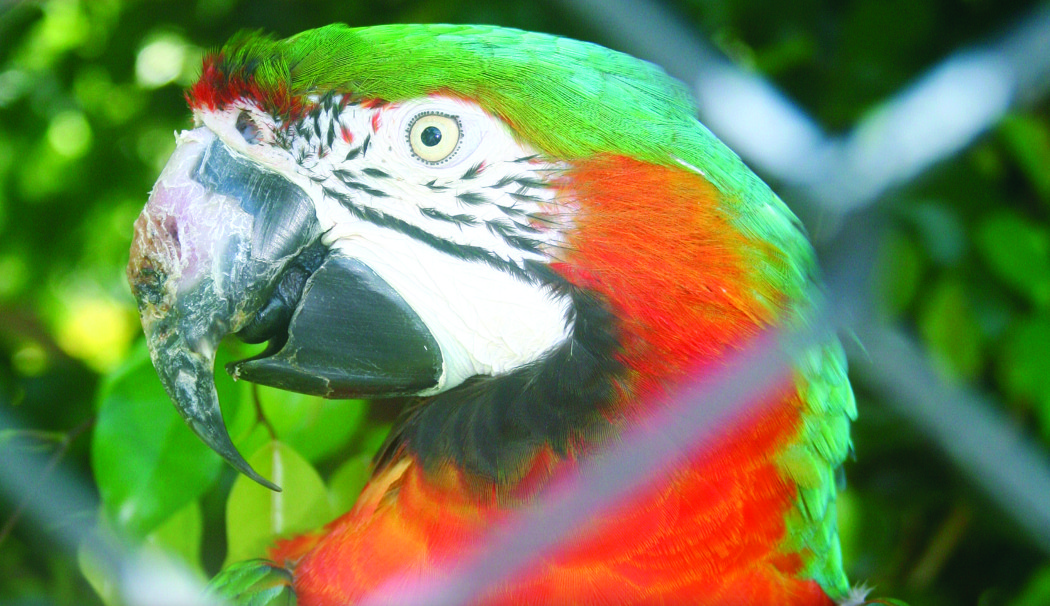
Growing Our Own Fuel: Biodiesel Ventures Sprouting Up

By Alan D. McNarie
Hawaii‘s lifestyle, for better or worse, depends on cars, trucks and buses. And cars, trucks and buses, unfortunately, depend on oil. Currently most of that oil comes to the island via ships from Alaska or Indonesia. But Alaska’s reserves are already starting to dwindle, and Indonesia isn’t the most stable country in the world. Worldwide, oil production isn’t keeping up with growing worldwide demand. After a brief respite due to the economic crisis, gasoline prices on the island have climbed to over three dollars a gallon again.
But what if we could grow our own oil?
Several companies are looking into just that possibility—especially that of producing biodiesel, a diesel substitute that can be created from used cooking oil or from a number of plant species. Biodiesel can be burnt in many farm tractors, most earthmovers, in some boats and in many commercial trucks; and, in the future, it could power many of our automobiles as well. Volkswagen and Mercedes Benz have been producing diesel-powered automobiles for decades. At 50-plus mpg and 140 horses, Volkwagen’s 2009 Diesel Jetta compares favorably to many hybrid vehicles. Any diesel vehicle can burn biodiesel, and when it does, it burns cleaner; instead of smelling like diesel fumes, a car burning the current generation of biodiesel smells like French fries.

Biodiesel isn’t a panacea. Any plan to generate enough of it to make even a significant dent in this island’s oil use could require thousands of acres of land, and some biodiesel crops would compete with food crops, cattle or Kona coffee for acreage. But other crops could be grown on what’s now considered marginal land, such as the abandoned pastures of Ka‘u or the thousands of acres in North Kona and Kohala that are currently covered with fountain grass.
When compared with an oil refinery, production of biodiesel is also a fairly simple process—so simple that some Big Islanders have created do-it-yourself biodiesel processors out of 50-gallon oil drums, and fueled their diesel cars or trucks with leftover oil from fast-food joints. Vegetable oil is combined with a catalyst to extract glycerin, a waxy substance that can be used to make soap or candles. The oil that remains is thin enough to burn in a diesel engine without gunking it up.
Two companies, in particular, are exploring the future of biodiesel in Kona. Pacific Biodiesel, which has been making biodiesel from cooking oil on Maui for years, is building a biodiesel plant in North Kona that could make the fuel from a variety of sources. And over at the Natural Energy Laboratories Hawaii Authority (NELHA) at Keahole Point, a company called Cellana is experimenting with biodiesel made from nature’s simplest plant: algae. According to Kelly King of Pacific Biodiesel, its new plant here would most likely rely on a “combination of waste cooking oil and jatropha oil.”
Jatropha is a small, hardy tree that produces poisonous but oil-rich fruit. It’s already used as a source of biodiesel in some regions of the world, such as China, India and Southeast Asia. It has some drawbacks—the fruit has generally been picked by hand, like Kona coffee, and there have been some reports of bad skin rashes and other symptoms from workers who’ve had prolonged contact with it. But if some sort of mechanical harvesting system can be worked out, it does have advantages. For one, it’s a prime candidate for those marginal lands.
“It’s been touted as one of the prime crops for biofuel because it doesn’t take much water, it’s supposed to be drought resistant, it’s supposed to be pest resistant, and it doesn’t require much fertilizer,” says King. But jatropha isn’t the only candidate. King’s company got a $100,000 grant to test various other oil-producing plants, including coconuts, for their biodiesel production capabilities. One that looks particularly promising already grows feral around the island, and was used as a fuel source by the ancient Hawaiians. It’s the kukui nut.
Kukui is sometimes called “candle nut,” because Hawaiians would string several on a skewer, light them and use them for illumination. As it turns out, kukui trees produce about as much oil as jatropha. And one property of kukui makes it especially interesting: it gels at a much lower temperature than many oils, which makes it a possible candidate for jet fuels. Extracting the oil is also a fairly low-tech process.
“If we had a crushing mill right now, we could just have people bringing in buckets of nuts, like recyclables,” says King. The crushing equipment, she notes, costs only “a few hundred thousand dollars.” Out at NELHA, Mark Huntley is experimenting with yet another oil source: that green scummy stuff that sometimes grows in a flower vase if you don’t empty the water out. The company he works for as chief technology and science officer is Cellana, and it has built a pilot plant to develop technologies for extracting oil from algae. It plans to build a full-scale commercial facility somewhere—maybe Kona, maybe somewhere else—by 2014. That plant, wherever it’s built, would be enormous.
“While we see the first commercial facility at a scale of a few thousand acres, subsequent facilities could be ten times larger, 20 times larger—about equal to a commercial sugar plantation.” But the pilot facility at NELHA is small: no more than an acre of algae ponds, plus the experimental technology (or technologies) to dry the algae and convert it to oil.
Algae has one huge advantage over other oil crops: its extreme productivity. Even in the tropics, farmers can usually produce a maximum of only two or three crops of land plants per year. A tank of algae can be harvested in a couple of days. In fact, one challenge of algae is not so much in growing it, but in keeping it under control. It’s the world’s fastest-growing plant, and it’s literally everywhere.
“Algae grows 10 times faster than sugar cane,” Huntley says. “Try to imagine mowing the lawn three times a day and you have your growth rate.” Researchers at the Center for Biorefining of the University of Minnesota estimate that algae produce 5,000 gallons of oil per acre. By comparison, corn yields 18 gallons, soybeans produce 48 gallons and palm trees yield 635 gallons per acre. Single cells float on the air, alight on a puddle, and immediately go to work turning sunlight, water and trace nutrients into green slime. It grows so rapidly that “algal blooms” can deplete all of the oxygen from the water, killing other organisms.
To prevent bio-pollution, Cellana uses only strains of algae that are native to the islands. In order to control the growth rate, it grows the single-celled organisms in nutrient-depleted water. To avoid contamination by air-borne strains, it harvests rapidly and regularly. If a spill somehow did occur, the plant is relying on Kona’s crystalline, relatively nutrient-poor waters to prevent disaster.
“In the context of a tsunami, you may put some algae out there, but there are no nutrients to feed them…either they get eaten or they sink to the bottom…” Huntley says. “There are probably some local filter feeders that would be very happy for a day or two, if a tsunami were to occur.”
The company is experimenting with a variety of technologies to extract the oil from the algae. One possibility is to break up the algae cells using ultrasound. Another involves pressure-cooking the oil out of the algae. Another, already commonly used to extract soybean oil, involves using a chemical called hexane as a catalyst. The hexane absorbs the oils, then the hexane is distilled off, leaving the oils behind. The hexane vapor is recaptured and reused, so it doesn’t enter the atmosphere. Huntley believes his plant will have settled on an extraction technology and built a pilot extraction facility by the end of the year.
For Huntley, an oceanographer who left the Scripps Institute to work on Cellana’s project, doing the technology in an environmentally sound way is important. The company, he claims, has “very, very strict environmental standards, and strives to exceed standards that are already out there. We have a group of about 50 people now; a lot of them come from Hawai‘i. One of the reasons that they work for us is that they want to do something to save the world,” he says. “They don’t want to mess it up anymore.”
Whether or not a full-scale algae-to-biodiesel facility is built here, he says, Hawaii will still have a major role in this new industry. “In Cellana’s view, the Kona pilot facility will continue to serve a very important role in being the global center of excellence for continuing development and improvement of the technologies—a global help desk, if you like, for commercial facilities that come into being.” ❖


